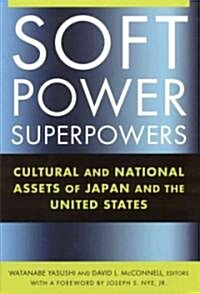
단행본
Bankrupting the enemy: the U.S. financial siege of Japan before Pearl Harbor
- 개인저자
- Edward S. Miller
- 발행사항
- Annapolis, Md.: Naval Institute Press, 2007
- 형태사항
- xvi, 323 p., [12] p. of plates : ill., maps ; 24cm
- ISBN
- 9781591145202
- 청구기호
- 327.10942013 M647b
- 서지주기
- Includes bibliographical references (p. 293-311) and index
소장정보
| 위치 | 등록번호 | 청구기호 / 출력 | 상태 | 반납예정일 |
|---|---|---|---|---|
이용 가능 (1) | ||||
| 1자료실 | 00012785 | 대출가능 | - | |
이용 가능 (1)
- 등록번호
- 00012785
- 상태/반납예정일
- 대출가능
- -
- 위치/청구기호(출력)
- 1자료실
책 소개
A great world power can wage economic war, forcing another country to go bankrupt. In the period leading up to Pearl Harbor, the United States deployed its formidable control of a war-torn financial system to freeze Japan's dollars and gold supply held in U.S. banks, driving the country into international bankruptcy. Edward S. Miller, award winning author of War Plan Orange: The U.S. Strategy to Defeat Japan, 1897-1945, convincingly demonstrates that financial strangulation, more than the more well-known blockade of oil exports, drove the Japanese leaders to desperation and ultimately to attack.
While researching newly declassified records of the Treasury and Federal Reserve, Miller, a retired chief financial executive of a Fortune 500 resources corporation, uncovered the details of how the U.S. used financial measures to curb Japan's aggression in Asia. Washington experts confidently predicted that the war in China would bankrupt Japan, not knowing that the Japanese government had a huge cache of dollars fraudulently hidden in New York. Once discovered, Japan scrambled to extract the money. But, Miller explains, in July 1941 President Roosevelt invoked a long-forgotten clause of the Trading with the Enemy Act of 1917 to freeze Japan's dollars and forbade it to sell its hoard of gold to the U.S. Treasury, the only open gold market after 1939..Roosevelt's temporary gambit to "bring Japan to its senses, not its knees," was thwarted, however, by opportunistic bureaucrats. Dean Acheson, his handpicked administrator, slyly manoeuvred to deny Japan the dollars needed to buy oil and other resources for war and for economic survival.
Miller's lucid writing and thorough understanding of the complexities of international finance enable readers unfamiliar with financial concepts and terminology to grasp his explanation of the impact of U.S. economic policies on Japan. His review of thirty-seven studies of Japan's resource deficiencies begs the question of why no U.S. agency calculated the impact of the freeze on Japan's overall economy. His analysis of a massive OSS-State Department study of prewar Japan clearly demonstrates that the deprivations facing the Japanese people were the country to remain in financial limbo buttressed its choice of war at Pearl Harbor. Such a well-documented study is certain to be recognised for its significant contributions to the historiography of the origins of the Pacific War.
A great world power can wage economic war, forcing another country to go bankrupt. In the period leading up to Pearl Harbor, the US deployed its formidable control of a war-torn financial system to freeze Japan's dollars and gold supply held in US banks, driving the country into international bankruptcy. Edward S. Miller convincingly demonstrates that financial strangulation, more than the more well-known blockade of oil exports, drove the Japanese leaders to desperation and ultimately to attack.
While researching newly declassified records of the Treasury and Federal Reserve, Miller, a retired chief financial executive of a Fortune 500 resources corporation, uncovered the details of how the U.S. used financial measures to curb Japan's aggression in Asia. Washington experts confidently predicted that the war in China would bankrupt Japan, not knowing that the Japanese government had a huge cache of dollars fraudulently hidden in New York. Once discovered, Japan scrambled to extract the money. But, Miller explains, in July 1941 President Roosevelt invoked a long-forgotten clause of the Trading with the Enemy Act of 1917 to freeze Japan's dollars and forbade it to sell its hoard of gold to the U.S. Treasury, the only open gold market after 1939..Roosevelt's temporary gambit to "bring Japan to its senses, not its knees," was thwarted, however, by opportunistic bureaucrats. Dean Acheson, his handpicked administrator, slyly manoeuvred to deny Japan the dollars needed to buy oil and other resources for war and for economic survival.
Miller's lucid writing and thorough understanding of the complexities of international finance enable readers unfamiliar with financial concepts and terminology to grasp his explanation of the impact of U.S. economic policies on Japan. His review of thirty-seven studies of Japan's resource deficiencies begs the question of why no U.S. agency calculated the impact of the freeze on Japan's overall economy. His analysis of a massive OSS-State Department study of prewar Japan clearly demonstrates that the deprivations facing the Japanese people were the country to remain in financial limbo buttressed its choice of war at Pearl Harbor. Such a well-documented study is certain to be recognised for its significant contributions to the historiography of the origins of the Pacific War.
A great world power can wage economic war, forcing another country to go bankrupt. In the period leading up to Pearl Harbor, the US deployed its formidable control of a war-torn financial system to freeze Japan's dollars and gold supply held in US banks, driving the country into international bankruptcy. Edward S. Miller convincingly demonstrates that financial strangulation, more than the more well-known blockade of oil exports, drove the Japanese leaders to desperation and ultimately to attack.




